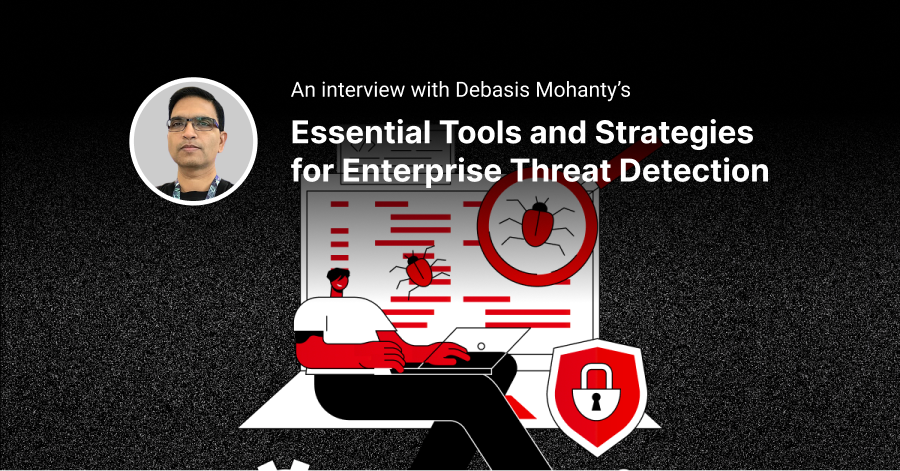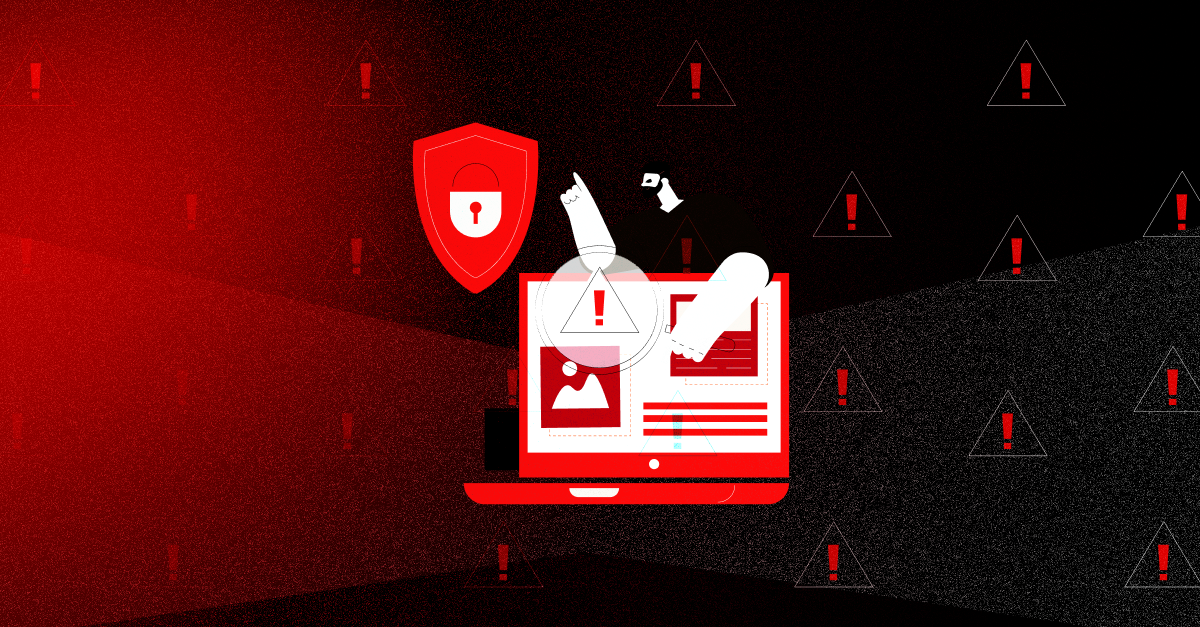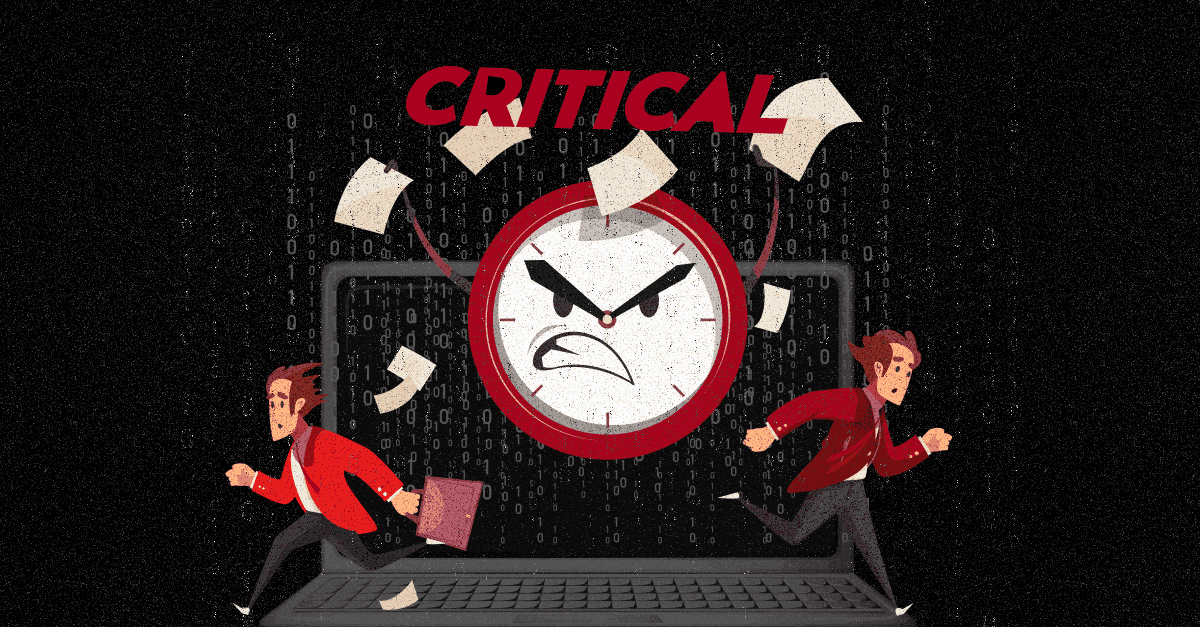One of the newer buzzwords circling in business, IT, and cybersecurity circles is DevSecOps. To those unfamiliar with it, it sounds like gibberish, but that couldn’t be further from the truth. The first half of 2020 alone saw nearly a dozen 0-day attacks, and software developers are working constantly on patches to try and combat this (an example of this is Microsoft, which rolls out software patches once a month), but such patches are often too late. Furthermore, fixing a software issue after it has been released can cost
up to 100X more (IBM)
than fixing it while it’s still in development.
Clearly, organizations cannot afford to wait to secure their software applications. The costs of doing so are simply too high – not only financially, but also in terms of lost customers and a damaged reputation. As a result, developers are now under pressure to identify security gaps early and close them before they can be exploited by bad actors. Here’s where DevSecOps comes in.
What is DevSecOps?
DevSecOps is about shifting security in the Software Development Lifecycle (SDLC) “to the left” (i.e., earlier). In practical terms, DevSecOps (short for Development, Security and Operations) enables development teams to incorporate strong security measures into the SDLC from the outset, making software development and security a collaborative approach. In other words, security is “baked in early,” not “tacked on later.”
This new approach to security differentiates DevSecOps from traditional SDLC practices. In the latter, security considerations entered late, and were the sole responsibility of specific teams in the final stages of development and testing. Sometimes teams even ignored or postponed security reviews and fixes to speed up time-to-market. This resulted in insecure code that made the final product vulnerable to data breaches and other cyberattacks. DevSecOps is a radical departure from this sub-optimal approach, since it integrates strong security practices from the very beginning – and at every stage – of the SDLC.
DevSecOps focuses on:
- Test-driven security (TDS) : Write security tests representing desired behaviours, then implement the necessary controls
- Continuous monitoring and response : Implement strong processes for issue logging, intrusion detection, and incident response
- Risk assessment and security testing : Evaluate application security with vulnerability scanning and configuration auditing
What is the Goal of DevSecOps?
In the past, when development cycles were long – extending for months or even years – a “development first, security later” approach was acceptable. But now, when cycles are much shorter and organizations are looking to become more agile and flexible, the older approach just doesn’t work. DevSecOps is about incorporating security into the entire SDLC, enabling development teams to find and fix any issues early on before they move down the SDLC and cause bigger problems later.
WHAT IS DEVSECOPS CULTURE?
DevSecOps culture emphasizes the integration of traditionally separated roles of Development, Security, and Operations into a more collaborative, and shared-responsibility model. This model fosters empathy among diverse teams and enables them to work together towards common organizational goals.
The DevSecOps culture is built on the following 4 key elements:
- People - People are at the heart of a successful DevSecOps execution. They are responsible for restructuring DevOps and Security teams to create an environment of mutual empathy and cooperation where security comes first.
- Processes - Processes aim to improve people's collaboration while also achieving more secure development processes in general. They create a common goal of developing secure and stable software at scale.
- Technologies - Having the right technology is critical to the DevSecOps approach. It helps in minimizing the attack surface of the organization and allows for more effective management of technical security debt.
- Governance
- While people, processes, and technologies work together to support one another, governance is an equally important component of DevSecOps. It assesses the performance of the other elements and can identify areas where more attention is required to ensure that all aspects of the culture come together.
WHAT ARE DEVSECOPS PRINCIPLES?
The following 6 core principles must be followed before you implement DevSecOps across your business:
- Leverage agile methodologies to deliver small, frequent releases
- Employ automated testing tools whenever possible
- Give developers the ability to influence security changes
- Ensure that you are always compliant
- Always be on the lookout for potential threats
- Invest in advanced training for your engineers
In addition, it should be inherent in your company’s culture to adopt the above-mentioned changes.
WHY IS DevSecOps IMPORTANT?
Today, a compartmentalized approach to security causes delays in the modern software development process. Incorporating security across the entire development and delivery process allows developers to resolve minor issues before they become large, time-consuming issues. Early intervention can avoid critical bugs and security flaws during the deployment phase while also maintaining the speed of work. Furthermore, DevSecOps offers high visibility into security risks and keeps cloud applications secure.
Ultimately, DevSecOps benefits your client in several ways. It shortens the development phase, resulting in faster delivery. You will also be able to respond to issues more quickly, make minor and frequent changes, while allowing your client more time and opportunity to provide valuable feedback.
DevSecOps Benefits
Faster, Cost-effective Application Delivery
As a collaborative approach, DevSecOps roles and responsibilities are intertwined and interdependent. Development, Operations and Security teams share responsibility for security from end to end. By shifting left, they can speed up security testing and raise the assurance level within the SDLC. They can also quickly fix any issues to accelerate delivery and avoid costly, time-consuming rework. Think about it this way: if you are building a house, you don’t wait until the walls are up, the roof is on, and everything is painted and furnished before you check to see if the floors are level. By then, fixing the issue can be costly and time-consuming. You do that early on, so that it is easier to fix if things are off. You do the same with corners, walls, rafters, etc. The DevSecOps approach was designed and developed to help prevent costly and time-consuming security issues later.
Proactive, End-to-end Security
Security teams share feedback and insights on known threats so developers can code with security in mind. The DevSecOps pipeline includes continuous – often automated – security checks, threat monitoring and vulnerability scanning. This mitigates risks that may otherwise impede the delivery schedule, and negatively impact the application and end-users.
Accelerated Vulnerability Fixes
With the DevSecOps model, teams run security checks as part of the build. As a result, they can find common vulnerabilities and exposures (CVE) early, allowing them to fix them faster. If there is a security incident, DevSecOps helps speed up recovery, so there’s less disruption to delivery, deployment and time-to-value.
FLEXIBLE AND REPEATABLE
DevSecOps allows for automated and repeatable testing throughout the software development lifecycle. Security postures evolve as the organization develops. With DevSecOps, security is implemented consistently and all across the organization, as it adjusts to new demands. A sophisticated DevSecOps deployment will incorporate security into every layer of the system.
Security Automation Compatible with Development Goals
Security automation
in DevSecOps enables teams to accelerate innovation with new technologies like containers and microservices. They can also integrate security-driven coding and testing into the SDLC with minimal disruptions to the delivery schedule. Automated test suites are also useful in a Continuous Integration/Continuous Delivery (CI/CD) pipeline.
Getting Started with DevSecOps
To transition to the DevSecOps model, organizations must change the way they view security, and how they achieve it.
In a
recent survey
:
- 42% of respondents said testing happens too late in the SDLC
- 36% reported it was hard to understand and fix discovered vulnerabilities
- 31% found it hard to prioritize vulnerability remediation
- 29% of security team members said that everyone should be responsible for security
Making security an intrinsic part of the DevOps process is the most efficient answer to these challenges. This requires regular conversations about security, integrating policy-as-code within the DevOps workflows, streamlining workflows, and centralizing playbooks.
It’s also critical to incorporate several key processes into the DevSecOps model:
- Regular and iterative code analysis
- Streamlined change management
- Maintaining consistent and continuous compliance (e.g. with GDPR)
- Threat investigation and response
- Vulnerability assessment and patching
- Secure coding training
DEVSECOPS VS DEVOPS
DevOps refers to the process of combining development and operations, whereas DevSecOps is a component of DevOps that puts an emphasis on security. While the two terms can’t be used interchangeably, DevSecOps can very well be compatible with DevOps and can sometimes even enhance DevOps capabilities.
DevOps is a set of practices that aims to accelerate the delivery of higher-quality software by automating and integrating the actions of the development and operations teams. By focusing on improving delivery speed, DevOps teams often overlook security threats in the process, which can jeopardise the application and organizational resources. This led to the evolution of DevSecOps from DevOps as security teams realized that security concerns weren’t being addressed adequately. This approach puts application security at the beginning of the creation process, rather than at the end of the development pipeline.
DEVSECOPS BEST PRACTICES
SHIFT LEFT SECURITY
Prior to DevSecOps, engineering teams organized their development cycles in a linear fashion, which meant that all testing and security reviews were completed after the planning, implementation, and integration phases. At this stage, changes are much harder to debug. This can be a significant amount of rework for development teams and can cause disruptions in performance. ‘Shift Left’ is a DevSecOps best practice that urges software engineers to place security at the left end or the beginning of the development pipeline. Shifting left enables the DevSecOps team to identify security threats and exposures early and respond to these security threats immediately.
SECURITY EDUCATION
In order to achieve security, you need to combine technology and innovation with compliance. Development engineers, operations teams, and compliance teams need to work together to ensure that everyone in the organization understands and adheres to the same security standards.
CULTURE
Cultivate a good culture within your organization that encourages change. DevSecOps teams need to communicate the responsibilities of security processes and product ownership so that the developers and engineers can design a workflow environment that meets their needs and take ownership for their work.
TRACEABILITY, AUDITABILITY, AND VISIBILITY
Traceability helps in bug reduction, compliance, and ensures secure code in application development by tracking components throughout the development cycle until they are implemented in code.
Auditability of technical, procedural and administrative security controls ensures that compliance of security controls is maintained.
Visibility is a critical practise for DevSecOps environments. It provides accountability through the project lifecycle with a strong monitoring system that sends alerts for cyberthreats and raises awareness of changes and cyber incidents as they take place.
DEVSECOPS TOOLS
DevSecOps Tools allow the development, security, and operations teams to collaborate closely and deliver better results in the same time frame but with fewer resources. DevSecOps tools can also be easily integrated into the CI/CD pipeline, allowing the organization to keep track of new security threats.
Here’s a list of the top 5 DevSecOps tools in 2022:
Aqua Security
- This is a cloud-native app security platform with full CI/CD integration and extensive vulnerability scanning that provides comprehensive protection for DevOps cycles.
SonarQube
- A free and open-source static code analysis tool, with premium versions that expand on the free version's limited but effective capabilities.
Checkmarx - It is a premium DevSecOps tool kit that consists of three testing and vulnerability alerting modules.
Irius Risk
- IriusRisk is a tool that uses a questionnaire-based system to create threat models.
ThreatModeler - A leading threat modeling tool, it comes with CI/CD integration, and professionally built threat diagram tools
Conclusion
The modern software development landscape demands speed and agility from organizations. By integrating development with security, DevSecOps helps teams create more secure, better-quality software that meets their customers’ needs. It also provides greater control over release cycles and creates a strong foundation for application modernization and digital transformation. The shift to DevSecOps requires some effort on the part of teams, but the things in life that are most worth it require effort. In the long run, the effort to move to a DevSecOps model is always worth it.






